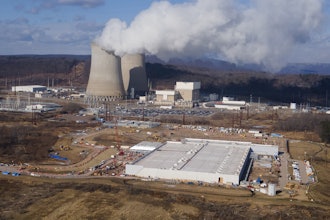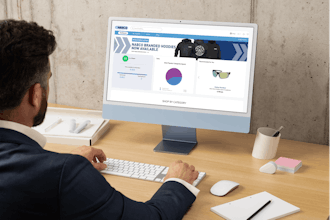Modern manufacturers and wholesale distributors are undergoing a transformation of their markets and business channels, and they need to transform their ERP systems to keep up. Transforming ERP processes and IT systems means taking the time to understand existing business processes and re-creating them for better efficiency and optimal productivity.
That's one of the themes that I and Jeff Carr, managing partner for Ultra Consultants, discussed at an Aug. 14 webcast, “ERP Cloud Transformations.” We explained the importance of making sure an organization's business processes match those of the supporting IT system, of leveraging the best practices for each vertical industry, and knowing what to look for in your ERP partner.
Transforming ERP is a major undertaking that requires understanding multiple business processes, how IT systems are affecting those processes, and then re-drawing them to get an efficient business operation. Successful ERP transformation also requires aligning the capabilities of your prospective ERP application with your firm's strategic initiatives, advises Tim Blair White, CIO of consulting firm L.N. Curtis & sons, in his blog post "Getting Through the ERP Technology Maze and Selecting the Right ERP for the Long-term." If this isn't done, White writes, "there will be no ROI and a lot of wasted effort."
More specifically, here are the steps you need to take prior to selecting a new ERP application or upgrading your existing one:
- Align ERP project goals to match business goals. Too often, a distributor focuses on getting a new ERP system rather than on defining what that system should do and how well it supports the distributor's processes. That won't lead to a good ERP selection. Instead, take a deeper look at ERP processes and how they can be improved.
- Evaluate business processes and map them out. Learn where they overlap, create redundant data, cause bottlenecks or waste, prevent good customer communications, or where they simply take longer than they should.
- Learn the industry standard practices and compare them. Define the best practices for financial, CRM, logistics, supply chain, and other business processes.
- Develop a plan for how an organization's processes should operate and what is required of an ERP system in order to implement the better business practices.
By understanding how the business should be changed -- how data should flow, what department should be communicating which data to other departments, and where information can be centralized and integrated, organizations can redraw their processes to be more efficient and, in doing so, create the optimal goals for an ERP project, along with a realistic budget, software requirements, and a timeline for completing it.
The ERP RFP
When designing the Request for Proposal (RFP) for an ERP purchase, organizations should include all of the business and IT requirements. Those are:
- All standard ERP elements — e.g. ERP, CRM, financials, supply chain and HR — built-in to the platform, with support included for other needs such as ecommerce, distribution, order management, inventory, manufacturing, BI, etc.
- Software that follows all industry best practices and is certified in necessary functionality, such as for various types of security, employment regulations and consumer privacy laws.
- Customization capabilities and partner modules to expand processes to unique needs. An auto insurance company will need different processes for commercial operators vs. regular drivers. Also consider how much specialization is needed to customize the application, advises White. After all, there's a big difference between needing a $100,000 a year Java developer and simply putting existing staff through basic training.
- In the cloud. A cloud-based platform such as NetSuite ERP enables customers to change and customize their applications to suit their own unique business processes. The single code base that a cloud-based platform can provide makes it much easier to add capabilities, customize, and integrate other applications. It also ensures a standard set of processes and data enterprise-wide, and saves on IT maintenance costs.
How do you know for sure if your vendor is cloud-friendly or just pretending to be? White recommends looking for such signs as an active third party application marketplace with many apps (more than a dozen) and solid customer reviews on those apps. A robust marketplace shows the vendor is really devoting time and money to cloud development. Also, check if the vendor goes to the trouble of testing and certifying its partners to develop on its cloud platform.
Get to Know Your Vendors. You will mostly likely find several ERP vendors who can address your vertical industry needs. Take time to evaluate the companies as partners. Your ERP partner will be — or should be — providing technical support, training, consulting, educational materials, upgrades and, usually, a partner network of other software companies who provide modules or customization work for the vendor. Take time to visit them at tradeshows, attend their sessions at conferences, follow them on social media, meet their managers at social events, and talk to customers of theirs that operate in your industry or neighboring ones. Having the right ERP vendor as your partner will play a major role in the success of your ERP transformation.






















